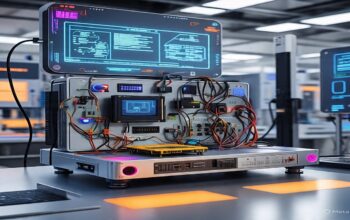A flying robot with a bird-like tail provides a new approach to flight stability. This inventive design may pave the path for more aerodynamic aircraft that use less fuel. Several factors influence aerodynamic stability in airships, particularly dimensions, form, and weight distribution. A well-designed airship often has a streamlined hull, which reduces drag and improves overall stability. Furthermore, the position of buoyant gas and payloads influences the center of gravity, which is critical for flight stability.
Covered Contents
ToggleSolving the mystery of bird flight:
PigeonBot II, a pigeon-inspired robot, has figured out how birds retain control without the vertical tail fin that human-designed airplanes require. This prototype implies that future passenger planes could minimize drag and fuel consumption using bird-like stabilizing techniques.
The role of tail fins in aircraft:
Vertical stabilizers (tail fins) on conventional airplanes provide stability by allowing the plane to turn while resisting unwanted direction changes. Some armed planes, like the Northrop B-2 Spirit, omit tail fins for stealth and instead use drag-inducing flaps—less efficient.
Birds possess unique flight mechanics:
Birds, unlike aircraft, do not have vertical fins at the tail and are incapable of producing asymmetric drag to maintain stability. David Lentink and his team at the University of Groningen created PigeonBot II to investigate how pigeons gain their natural steadiness.
From PigeonBot to PigeonBot II:
The team’s earlier 2020 model approximated bird flight with flapping wings but depended on a typical tail. The latest PigeonBot II features a bird-like tail and 52 actual pigeon feathers, allowing for successful test flights.
Mimicking Reflexive Tail Movements:
PigeonBot II’s effectiveness stems from its capacity to mimic the reflexive tail movements that pigeons use to balance themselves during flight. Lentink argues that a pigeon’s tail naturally responds to body tilts, a mechanism now demonstrated by the robot’s design.
Advanced Controls and Autopilot Technology:
PigeonBot II has nine servo motors that regulate its tail and steady the vehicle. These maneuvers are so complex that human pilots cannot directly fly them. Instead, the robot uses an autopilot system to translate high-level commands into precise motions.
Achieving successful flights:
PigeonBot II successfully showed its revolutionary stability system by safely taking off, cruising, and landing after undergoing multiple tests to refine control systems.
Every successful flight is a blend of science, skill, and precision. It starts with experts analyzing weather, fine-tuning engines, mapping, and clearing routes.
Implications of Aircraft Design in Modern Aviation:
Lentink reveals that vertical tails on airplanes are superfluous since they increase weight, fuel consumption, and drag. While scaling this bird-inspired system for larger aircraft requires more research. It is a promising step toward more efficient aviation in history.
The future of airplane design provides great opportunities for changing the way we travel while protecting our environment. Experts are conducting research on planes that consume less fuel or possibly run on electricity, thus reducing pollution.
Blended-wing bodies, which combine the wings and body into a single design, streamline plane efficiency and quietness. Supersonic planes could make extended trips considerably shorter, while vertical takeoff and landing (VTOL) airplanes could allow us to fly directly from cities without large airports.
Smart technology such as artificial intelligence and sophisticated materials will make airplanes safer and lighter. These advancements offer more rapid, healthier, and more practical air travel, paving the way for a future. Which provides flying benefits to both individuals as well as the environment.
Key Features of PigeonBot II :
PigeonBot II represents a unique approach to flying stably, mirroring the organic dynamics of bird tails. This discovery demonstrates that vertically oriented tail fins, which add weight and drag to standard airplanes, are not required for flight control. PigeonBot II, inspired by birds, uses reactive tail changes to provide an economical and aerodynamic aircraft solution. While further study is necessary to adapt this sort of technology to larger aircraft, it has the potential to significantly reduce fuel consumption and improve flight endurance in the future.


